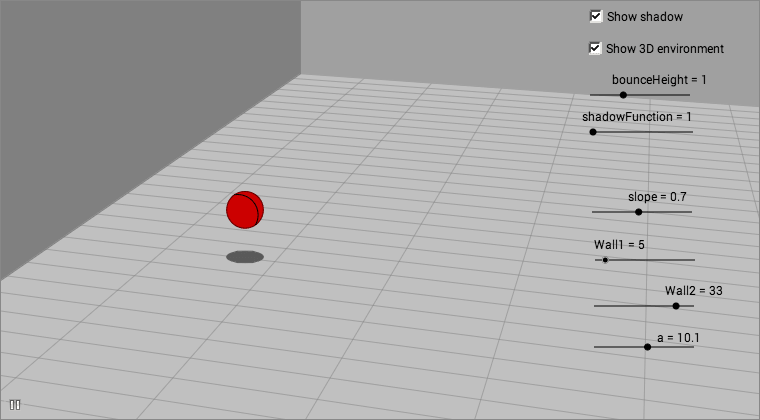Modelling 3D Illusions
| ◊◊◊ | Newton Fractals→ |
|---|
Red circle moving along a line
The human brain uses shadows to interpret how objects move. By faking the shadow, one can fake the perceived motion of an object.
Hide the shadow to see the real movement of the red circle. Change the function of the shadow or the height of the bounces. Zoom out to change the two points defining the perspective lines
If shadowFunction 2 is chosen (a parabola) and the height is maximum, it doesn't look as if the ball is moving straight up but
rather making an angle to the z-axis. The motion perceived, is the kind of motion that would make a parabolic shadow when viewed
from an angle making the motion as straight as possible.
When the 3D-environment is hidden, it is easier to perceive the motion as a movement along a straight line. The 3D-environment strengthens the illusion.
The bounces are made using three different parabolas. Parabolas are the actual shape of a bouncing ball. I initially tried to use the absolute value of a damped trigonometric function, since it's easier, but it didn't look like a realistic motion.
Animated gif
Non-bouncing ball on tumblr.

